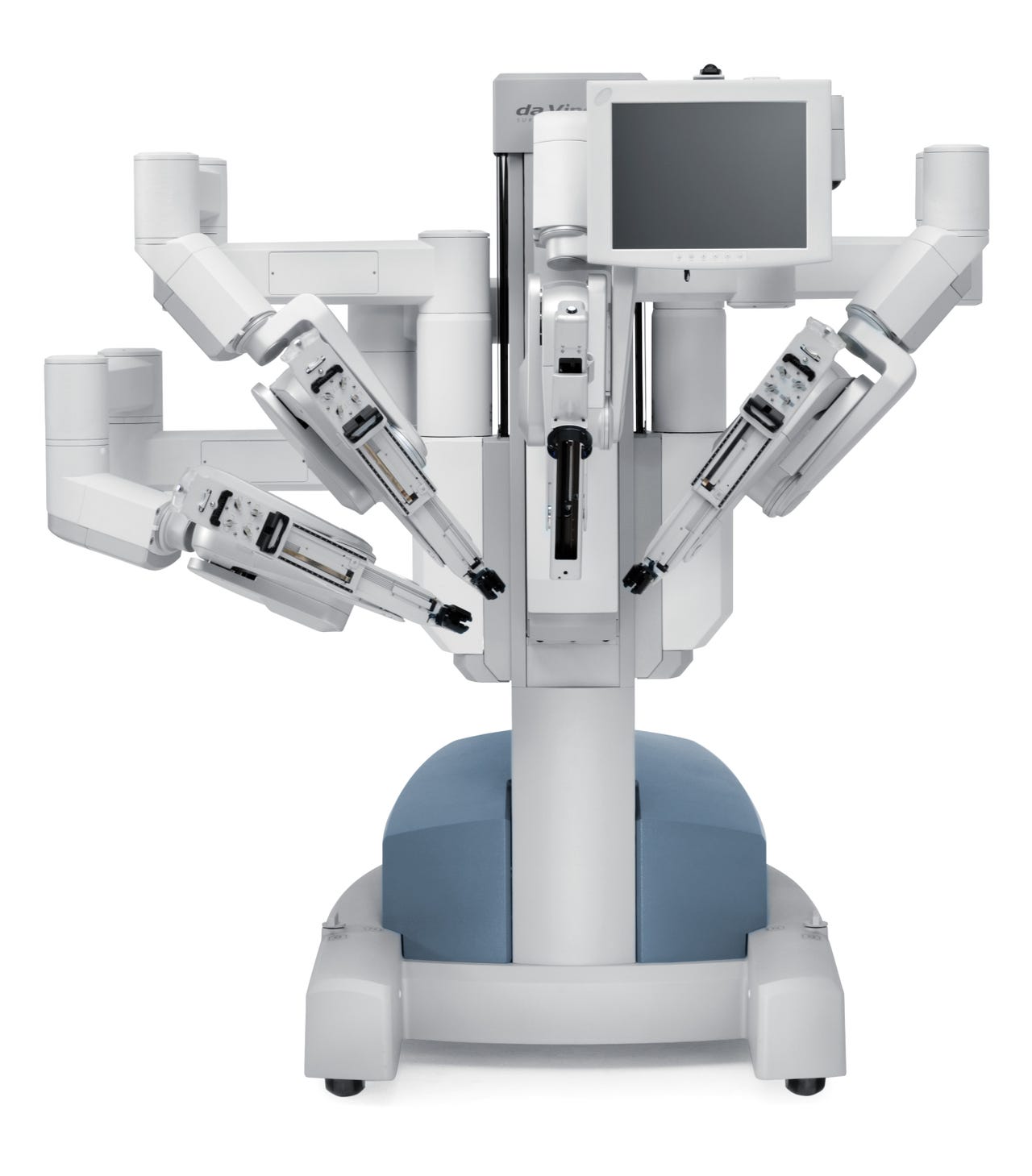Remote robotic surgery is both practical and safe

The Nicholson Center at Florida Hospital, which trains doctors to use the latest medical technology, including robots, has been testing the latency between communication-rich environments, such as hospital campuses.
Early results have led researchers to a conclusion that is either astounding or not at all surprising, depending on the depth of your knowledge about network latency and the recent progress of robotic surgery. It turns out that telesurgery, in which a surgeon in one location performs an operation in another with the aid of a robot, could quite easily be practiced today with existing technology. I, for one, was astounded.
"We didn't know if we could stay below the necessary thresholds in terms of latency," says Dr. Roger Smith, CTO of the Nicholson Center, referring to the delay between the moment information is transmitted and the moment it is received. "But it turns out that today's internet has no trouble beating those thresholds. So the barrier to telesurgery really isn't in the technology, but elsewhere."
The burgeoning field of robotic surgery is dominated by Intuitive Surgical, which makes the da Vinci Surgical System. Intuitive received FDA clearance for the da Vinci in 2000, though at that time it wasn't clear how readily surgeons would adopt the new technology or how patients would react to it. But the da Vinci proved its usefulness early on by reducing complications associated with prostate removal. Because of the position of the prostate, surgeons have to enter through the abdomen and then tunnel down to reach it. The invasiveness of the procedure carries high risks, and two common complications are incontinence and impotence. The da Vinci uses long pencil-like rods in place of a surgeon's hands, meaning surgeries performed with it are less invasive and significantly reducing complications and recovery times.
Hundreds of thousands of surgeries are now conducted with da Vinci systems each year--virtually every prostate patient with a choice opts for it--and robotic surgery has quickly passed the crucial adoption threshold. Intuitive Surgical now has an $18.2B market cap.
At your service: 8 personal assistant robots coming home soon
Interestingly, many of the patents that Intuitive acquired when constructing the da Vinci came from tech developed with funding from the Department of Defense. It makes sense. The military has a huge interest in robotic surgery. In combat, evacuating casualties to a state of the art medical facility can be exceedingly difficult. But neither is it practical to staff combat hospitals with the necessary array of surgical specialists. The best answer seems to lie in a robotic surgical device that can be operated remotely by an expert surgeon who is perhaps based hundreds of miles away. The da Vinci was a major step toward that vision, but it's taken longer to clear the network hurdles necessary to make remote surgery viable.
"Early on, several people did experiments from a few miles apart," says Smith. Then, in 2001, a surgeon made arrangements to use AT&T's fastest transatlantic communications cable. He sat in New York and removed a woman's gallbladder in France using the dedicated line. It was an impressive test of the feasibility of telesurgery, albeit one performed under exacting and unrealistic conditions. Failing a dedicated line, there was no practical way to transmit large amounts of data quickly or reliably enough to make the concept a reality, and interest in telesurgery soon died out. "No one thought it would happen anytime soon," Smith recalls.
The Nicholson Center picked up the thread a couple years ago. Their first task was to determine the latency threshold--that is, the amount of delay a surgeon can experience between the moment they perform an action to the moment video of the action being carried out at the surgery site reaches their eyes. To find the threshold, Nicholson researchers used video simulators, introducing a small delay and stepping it up as surgeons attempted to perform routine procedures. They found that most surgeons noticed the delay after 300 milliseconds. After 500 milliseconds dexterity dropped off dramatically.
The second part of the test, which was really little more than a matter of talking to the IT guy at Florida Hospital in Orlando, was to figure out if the necessary amount of data could be transmitted reliably below the threshold. "We didn't know if we could do it," says Smith. "But it turns out that today's internet has no trouble beating those thresholds at all."
Robotics
The basic data transmitted during telesurgery includes two HD video feeds (one for each of the surgeon's eyes), two-way audio, and the robotic controls from the operator to the robot. "Across Orlando we figured out that we can deliver all that data in 5MS."
Distance increases latency, obviously, so the team decided to expand its research. A recent test between Celebration, Florida, and Fort Worth, Texas, which spans approximately 1,200 miles, easily fell within the threshold of 200 to 500 milliseconds.
"Based on these tests, I think it's safe to say that telesurgery is possible and safe across large areas within the United States," says Smith.
The barriers that remain have to do largely with liability and perception. A bad outcome during an early telesurgery operation would almost certainly result in litigation, and that makes it a risky option to pursue. But robotic surgery faced similar challenges before Intuitive broke through, and there's no reason telesurgery can't do the same. With the right medical or logistical exigency, the surgeon may soon see you from a distance.